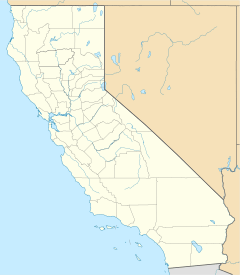Chowigna, California facts for kids
Quick facts for kids
Chowigna
|
|
|---|---|
|
Former settlement
|
|
| Country | United States |
| State | California |
| County | Los Angeles County |
| Elevation | 1,188 ft (362 m) |
Chowigna (also called Unaungna) was an old village where the Tongva-Gabrieleño Native American people lived. It was located in what is now Palos Verdes, California. This area is part of the Palos Verdes Peninsula in Los Angeles County.
People sometimes spelled its name differently. Some variations include Chowiinga, Chowi, and Chowingna.
Contents
Discovering the Ancient Village
The Chowigna village site at Malaga Cove has a very long history. People lived there for at least 7,100 years. This makes it a very important historical place.
First European Contact
The village was first written about in 1542. This was when the Cabrillo Expedition explored the coast of California. They were the first Europeans to describe the area.
Uncovering History: Archeological Digs
Archeologists studied the site in 1936 and 1937. The Southwest Museum of the Native Americans and the University of Southern California worked together. They dug up thousands of objects. These objects tell us a lot about the people who lived there.
What Archeologists Found
The items found included many tools and art pieces. They found arrowheads, tools for grinding food (like mortars and pestles), and scrapers. There were also spoons made from abalone shells. Other finds included beads, bone tools, and different kinds of shells. Some shells were from olivella snails and giant keyhole limpets.
They also found bones from animals that were eaten. These included mussels and birds. Experts believe about 150 people lived in the village around the year 1775. The way the layers of soil and objects were found helped scientists understand the history of the region.
Where to See Chowigna Artifacts
You can see some of the objects from Chowigna today. They are kept at the Southwest Museum of the Native Americans. You can also find some at the Redondo Beach Historical Museum.
Life and Resources in Chowigna
The Chowigna people used different parts of their land for various needs. They had special places for looking out and for gathering food.
A Lookout Point
The site of today's Hopkins Wilderness Park was once a lookout spot. This park is in Redondo Beach. From 1956 to 1963, it was a Nike missile site (LA-57). But long before that, the Chowigna used it to watch over their territory.
Food and Salt from the Wetlands
The wetlands near where the AES power plant is today were very important. These wetlands provided a lot of food. The Chowigna people caught fish like halibut and sea bass. They also found lobster there.
The wetlands were also a source of salt. There was a natural salt lake called the Redondo Salt Lake. It was about 200 yards wide and 600 yards long. This lake was fed by springs and was close to the ocean.
Trading Salt with Other Tribes
In the 1700s, the Chowigna traded salt from this lake with other Native American tribes. Their village by the lake was called "Onoova-nga." This name means "Place of Salt."
Changes to the Village
In 1854, the Chowigna people were moved from their village. This happened when Manuel Dominguez sold 215 acres of land. This land was part of Rancho San Pedro and included the salt lake. The land was sold to Henry Allanson and William Johnson. They started a company called Pacific Salt Works.
The Chowigna village, or rancheria, was connected to the Mission San Gabriel Arcángel.


